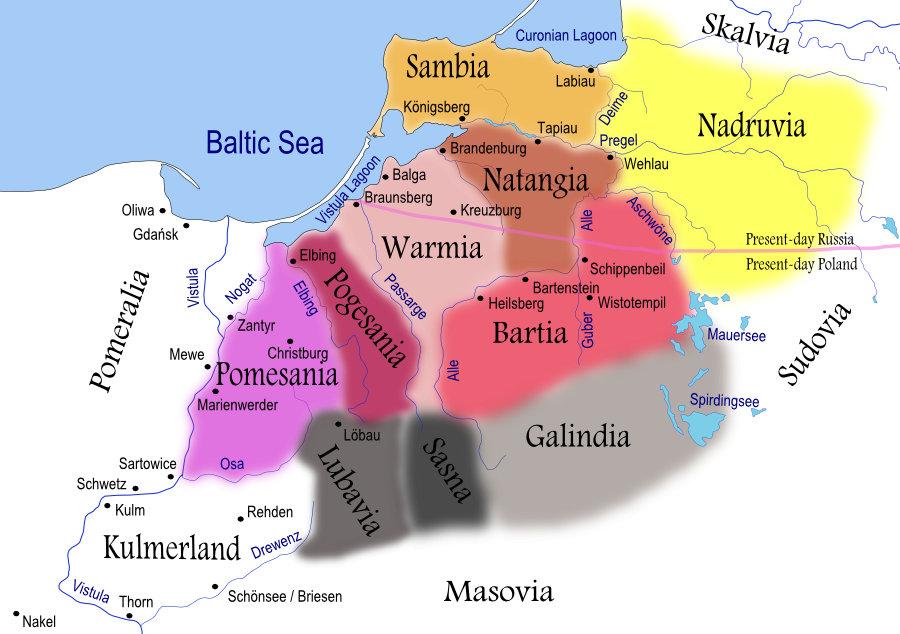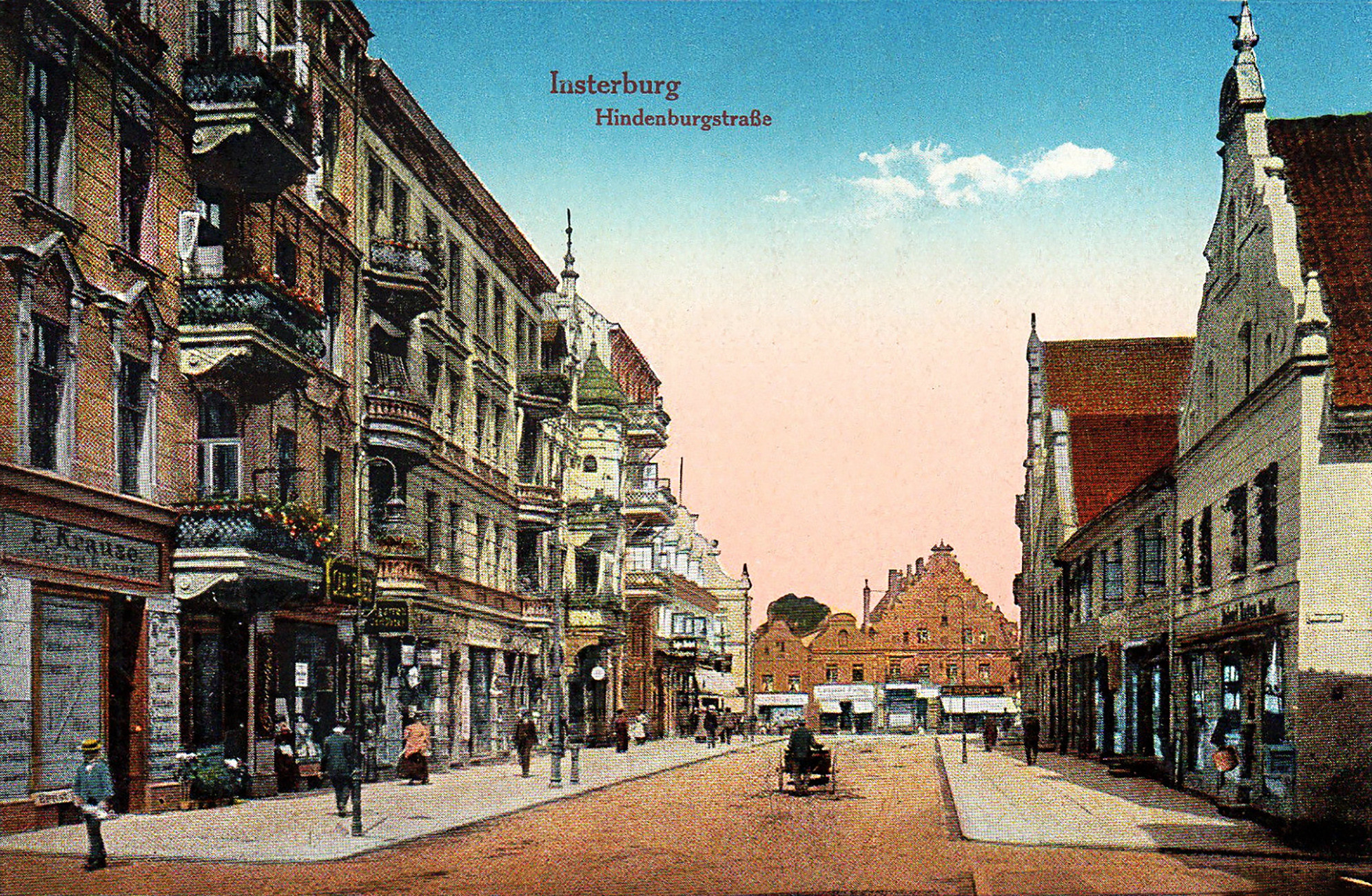|
Głos Znad Pregoły
''The Voice from the Pregel'' (; ) is a Polish magazine published since November 1995 in Kaliningrad Oblast, only the second Polish language publication published in the city since the ''"Poczta Królewiecka"'' ceased in 1720. History The first issue was published on 11 November 1995 from the initiative of Casimir (Kazimierz) Lawrynowicz with the aid of the Polish Consulate in Kaliningrad. Initially the publication was edited in Elblag by ''"Kurier Elbląski"'' with financial support from the local branch of the Polish Catholic-Social Union. Between 1997-1998 Głos znad Pregoły was published by the ''"Informacyjny Kurier Tygodniowy"'' from Braniewo, and finally in the summer of 1998, the editorial board was moved to Kaliningrad. Since then, the printing and paper purchase has been financed by the Foundation for Assistance to Poles in the East. The first editor of the magazine was Casimir (Kazimierz) Ławrynowicz, with ks. Jerzy Steckiewicz, Cleopas Ławrynowicz, Vasily Vasilyev, ... [...More Info...] [...Related Items...] OR: [Wikipedia] [Google] [Baidu] |
Kaliningrad Oblast
Kaliningrad Oblast () is the westernmost federal subjects of Russia, federal subject of the Russian Federation. It is a Enclave and exclave, semi-exclave on the Baltic Sea within the Baltic region of Prussia (region), Prussia, surrounded by Poland to the south and Lithuania to the north and east. The largest city and administrative centre is the city of Kaliningrad. The port city of Baltiysk is Russia's only port on the Baltic Sea that remains ice-free in winter. Kaliningrad Oblast had a population of roughly one million in the 2021 Russian census. It has an area of . Various peoples, including Lithuanians, Germans, and Polish people, Poles, lived on the land which is now Kaliningrad. The territory was formerly the northern part of East Prussia. With the defeat of Nazi Germany in World War II, the territory was annexed to the Russian Soviet Federative Socialist Republic, Russian SFSR by the Soviet Union. Following the Aftermath of World War II, post-war migration and Flight and e ... [...More Info...] [...Related Items...] OR: [Wikipedia] [Google] [Baidu] |
Poczta Królewiecka
(or ''The Königsberg Post'') was a weekly magazine published in Königsberg (known in Polish as ''Królewiec'') from 1718 to 1720. It was published in the Polish language, and was the second oldest Polish newspaper. History The newspaper was published in Königsberg, Kingdom of Prussia, from 6 April 1718 to 28 December 1720. It focused on regions Prussia and Lithuania, but was available throughout the entire Polish–Lithuanian Commonwealth. The publication language was Polish. The volume of publication is unknown, but estimated at few hundred copies. Information on Germany came in the form of translations from German language press such as '' Koenigliche Preusssische Fama'', while the news from Poland was mostly original reporting. It was published on a weekly basis, and primarily included news from Europe, with the focus on the Polish and German lands. The size of the magazine was the so-called "eight", 28x10 cm, and used the Schwabacher font. It was published by Jan Dawid C ... [...More Info...] [...Related Items...] OR: [Wikipedia] [Google] [Baidu] |
Braniewo
Braniewo () (, , Old Prussian language, Old Prussian: ''Brus''), is a town in northern Poland, in Warmia, in the Warmian-Masurian Voivodeship, with a population of 16,907 as of June 2021. It is the capital of Braniewo County. Braniewo is the second biggest city of Warmia after Olsztyn and one of the historical centers of the region. Location Braniewo lies on the Pasłęka River about 5 km from the Vistula Lagoon, about 35 km northeast of Elbląg and southwest of Kaliningrad (). The Polish border with Russia's Kaliningrad Oblast lies 6 km north, and may be reached from Braniewo via National road 54 (Poland), National road 54. History Middle Ages According to the German geographer Johann Friedrich Goldbeck (1748–1812), the town originally was named Brunsberg after Bruno von Schauenburg (1205–1281), bishop of Olomouc in Moravia, who accompanied King Ottokar II of Bohemia in 1254 and 1267 when the latter participated in the crusade of the Teutonic Knights again ... [...More Info...] [...Related Items...] OR: [Wikipedia] [Google] [Baidu] |
Kaliningrad
Kaliningrad,. known as Königsberg; ; . until 1946, is the largest city and administrative centre of Kaliningrad Oblast, an Enclave and exclave, exclave of Russia between Lithuania and Poland ( west of the bulk of Russia), located on the Pregolya, Pregolya River, at the head of the Vistula Lagoon, and the only Port#Warm-water port, ice-free Russian port on the Baltic Sea. Its population in 2020 was 489,359. Kaliningrad is the second-largest city in the Northwestern Federal District, after Saint Petersburg and the List of cities and towns around the Baltic Sea, seventh-largest city on the Baltic Sea. The city had been founded in 1255 on the site of the ancient Old Prussians, Old Prussian settlement ''Twangste'' by the Teutonic Knights during the Northern Crusades, and named ''Königsberg'' ("king's mountain") in honor of King Ottokar II of Bohemia. A Baltic port city, it successively became the capital of the State of the Teutonic Order, the Duchy of Prussia and the provinces of ... [...More Info...] [...Related Items...] OR: [Wikipedia] [Google] [Baidu] |
Baltiysk
Baltiysk ( ); ; Old Prussian: ''Pillawa''; ; ; is a seaport town and the administrative center of Baltiysky District in Kaliningrad Oblast, Russia, located on the northern part of the Vistula Spit, on the shore of the Strait of Baltiysk separating the Vistula Lagoon from Gdańsk Bay. It had a population of Baltiysk, the westernmost town in Russia, is a major base of the Russian Navy's Baltic Fleet and is connected to St. Petersburg by ferry. History Old Prussian village Baltiysk was originally the site of an Old Prussian fishing village that was established on the coast of the Vistula Spit at some point in the 13th century. The village was named as "Pile" or "Pil" in several documents, possibly taking its name from ''pils'' the Old Prussian language word for fort. It was eventually conquered by the Teutonic Knights, with the name evolving into the German form of Pillau. In 1497, a storm surge dug a new gat in front of the village, and another large storm create ... [...More Info...] [...Related Items...] OR: [Wikipedia] [Google] [Baidu] |
Ozersk
Ozyorsk () or Ozersk () is the name of several inhabited localities in Russia. ;Urban localities *Ozyorsk, Chelyabinsk Oblast, a town in Chelyabinsk Oblast *Ozyorsk, Kaliningrad Oblast Ozyorsk (, until 1938 ; ; ; from 1938 to 1946 ) is a town and the administrative center of Ozyorsky District in Kaliningrad Oblast, Russia, located on the Angrapa River near the border with the Polish Warmian-Masurian Voivodeship, southeast o ..., a town in Ozyorsky District of Kaliningrad Oblast ;Rural localities * Ozersk, Samara Oblast, a settlement in Bolsheglushitsky District of Samara Oblast {{Set index article, populated places in Russia ... [...More Info...] [...Related Items...] OR: [Wikipedia] [Google] [Baidu] |
Chernyakhovsk
Chernyakhovsk (; German: Insterburg) is a town in Kaliningrad Oblast, Russia, and the administrative center of Chernyakhovsky District. Located at the confluence of the Instruch and Angrapa rivers, which unite to become the Pregolya river below Chernyakhovsk, the town had a population in 2017 of 36,423. History Medieval period Insterburg was founded in 1337 by the Teutonic Knights on the site of a former Old Prussian fortification when Dietrich von Altenburg, the Grand Master of the Teutonic Knights, built a castle called ''Insterburg'' following the Prussian Crusade. During the Teutonic Knights' Northern Crusades campaign against the Grand Duchy of Lithuania, the town was devastated in 1376. The castle had been rebuilt as the seat of a Procurator and a settlement also named ''Insterburg'' grew up to serve it. In 1454, Polish King Casimir IV Jagiellon incorporated the region to the Kingdom of Poland upon the request of the anti-Teutonic Prussian Confederation. During the ... [...More Info...] [...Related Items...] OR: [Wikipedia] [Google] [Baidu] |
Polish-language Newspapers
Polish (, , or simply , ) is a West Slavic language of the Lechitic subgroup, within the Indo-European language family, and is written in the Latin script. It is primarily spoken in Poland and serves as the official language of the country, as well as the language of the Polish diaspora around the world. In 2024, there were over 39.7 million Polish native speakers. It ranks as the sixth-most-spoken among languages of the European Union. Polish is subdivided into regional dialects. It maintains strict T–V distinction pronouns, honorifics, and various forms of formalities when addressing individuals. The traditional 32-letter Polish alphabet has nine additions (, , , , , , , , ) to the letters of the basic 26-letter Latin alphabet, while removing three (x, q, v). Those three letters are at times included in an extended 35-letter alphabet. The traditional set comprises 23 consonants and 9 written vowels, including two nasal vowels (, ) denoted by a reversed diacritic hook call ... [...More Info...] [...Related Items...] OR: [Wikipedia] [Google] [Baidu] |
Mass Media In Kaliningrad
Mass is an intrinsic property of a body. It was traditionally believed to be related to the quantity of matter in a body, until the discovery of the atom and particle physics. It was found that different atoms and different elementary particles, theoretically with the same amount of matter, have nonetheless different masses. Mass in modern physics has multiple definitions which are conceptually distinct, but physically equivalent. Mass can be experimentally defined as a measure of the body's inertia, meaning the resistance to acceleration (change of velocity) when a net force is applied. The object's mass also determines the strength of its gravitational attraction to other bodies. The SI base unit of mass is the kilogram (kg). In physics, mass is not the same as weight, even though mass is often determined by measuring the object's weight using a spring scale, rather than balance scale comparing it directly with known masses. An object on the Moon would weigh less than it d ... [...More Info...] [...Related Items...] OR: [Wikipedia] [Google] [Baidu] |


